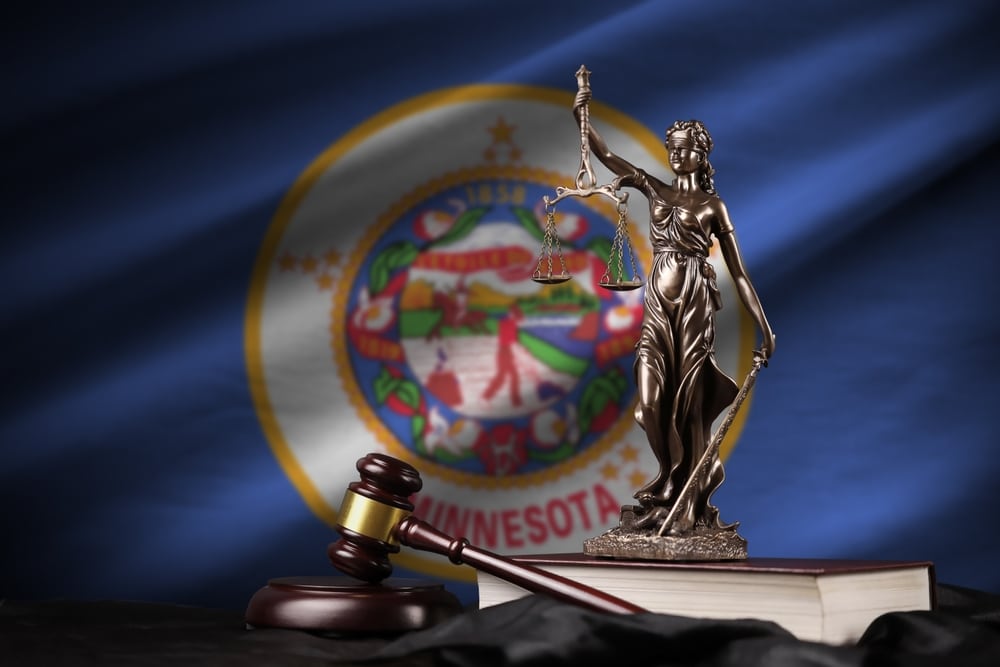Minnesota Bankruptcy Guide

Introduction
Minnesota’s bankruptcy system provides robust protections for residents facing financial difficulties, with particular attention to the state’s agricultural heritage and seasonal business considerations. The state’s unique approach balances urban and rural needs while offering some of the nation’s most generous property exemptions, especially for agricultural properties.
The Minnesota bankruptcy process operates through dedicated federal courts while incorporating state-specific exemptions and protections that reflect local economic realities. From farms in the rural countryside to homes in the Twin Cities, the system accommodates diverse financial situations and property types.
Understanding Minnesota’s bankruptcy landscape requires familiarity with both federal bankruptcy law and state-specific provisions. This guide explores the unique aspects of filing bankruptcy in Minnesota, including generous homestead exemptions, special protections for agricultural operations, and considerations for seasonal businesses.
Weather plays a significant role in Minnesota bankruptcy proceedings, affecting everything from court appearances to filing deadlines. The system acknowledges these challenges through flexible scheduling and emergency provisions during severe weather conditions.
For Minnesota residents considering bankruptcy, the state offers numerous resources and support services, including specialized legal aid organizations and credit counseling agencies familiar with local conditions and requirements.

State Bankruptcy Courts
District of Minnesota Organization
The U.S. Bankruptcy Court for the District of Minnesota maintains headquarters in Minneapolis with additional locations in Duluth, St. Paul, and Fergus Falls. This strategic distribution ensures reasonable access for residents throughout the state’s diverse geographic regions.
Each courthouse location operates under unified federal bankruptcy laws while maintaining specific local rules and procedures. The Minneapolis headquarters coordinates administrative functions and ensures consistent application of bankruptcy laws across all locations.
The court’s website (www.mnb.uscourts.gov) serves as the central resource for forms, procedures, and updates. While electronic filing is standard for attorneys, the court maintains accommodations for paper filing when necessary, particularly for pro se filers.
Minnesota Property Exemptions
Homestead Exemption
Minnesota offers exceptional homestead protection with exemptions of $480,000 for general properties and $1,200,000 for farmland. These generous limits help ensure residents can maintain stable housing through financial difficulties while protecting the state’s agricultural heritage.
The homestead exemption covers properties up to 160 acres for agricultural use or one-half acre in urban areas. This protection extends to all forms of primary residences, including manufactured homes, condominiums, and traditional houses.
Married couples filing jointly can effectively double these exemption amounts through proper planning and filing procedures. The protection remains even during temporary absences, provided the owner intends to return and maintain the property as their primary residence.
Personal Property Exemptions
Minnesota protects various personal property categories, starting with a vehicle exemption of up to $5,000 in equity. This amount increases if the vehicle includes modifications for disability access or serves essential family or work purposes.
Household goods receive protection up to $11,250, while clothing, wedding rings, and family keepsakes enjoy unlimited protection. The state ensures access to necessities by protecting one year’s supply of food and fuel, particularly important during Minnesota’s challenging winters.
Health aids receive complete protection regardless of value, recognizing their essential nature. The state also provides full protection for family photos and keepsakes, acknowledging their irreplaceable personal value.
Wage Exemptions
Minnesota protects the greater of 75% of disposable earnings or 40 times the federal minimum wage per week. This protection applies to both regular wages and commissions, helping ensure basic living standards during bankruptcy proceedings.
Agricultural income receives enhanced protection, recognizing farming’s seasonal nature. This includes protection for government agricultural payments, crop proceeds, and livestock income.
Public assistance payments receive special protection, including unemployment compensation, workers’ compensation, and veterans’ benefits. These protections ensure essential support remains available for its intended purposes.
Tools of Trade
Minnesota provides generous protection for work-related equipment, allowing exemptions up to $13,000 for tools and equipment necessary for employment or business operations. This protection extends to professional libraries, business computers, and specialized equipment.
Farmers receive additional consideration through specific protections for agricultural implements and livestock-related tools. These provisions help ensure agricultural operations can continue during financial reorganization.
The tools of trade exemption covers both physical tools and intellectual property necessary for earning a living, including professional licenses and specialized software.
Additional Exemptions
Retirement and Benefit Protection
Most retirement accounts receive complete protection under Minnesota law, including 401(k)s, IRAs, and pension plans. This protection ensures long-term financial security remains intact through bankruptcy.
Public assistance benefits receive full protection, including Social Security, unemployment compensation, and veterans’ benefits. Workers’ compensation and accident claims receive protection up to $50,000.
Insurance benefits enjoy substantial protection, with life insurance benefits protected up to $50,000 and accident policy benefits receiving similar consideration.
Special Minnesota Considerations
State-Specific Requirements
Minnesota requires completion of approved credit counseling from providers familiar with local conditions and requirements. This counseling must address both general financial management and specific considerations for Minnesota residents.
Residency requirements must be met before filing, with special provisions for agricultural operators and seasonal workers. The state considers the impact of seasonal business cycles on income calculations and filing timing.
Local courts maintain specific requirements for agricultural declarations and seasonal business documentation, ensuring accurate representation of financial situations unique to Minnesota’s economy.
Median Income Thresholds
As of 2024, Minnesota’s median income thresholds determine Chapter 7 eligibility:
- Single person: $65,482
- Family of 2: $82,954
- Family of 3: $96,674
- Family of 4: $112,486
- Additional family members: Add $9,900 each
These thresholds adjust periodically for inflation and economic conditions. Households below these levels typically qualify for Chapter 7, while those above must pass the means test or consider Chapter 13.
Legal Aid Organizations
Minnesota maintains a robust network of legal aid organizations:
- Legal Aid Society of Minneapolis
- Southern Minnesota Regional Legal Services
- Legal Services of Northwest Minnesota
- Volunteer Lawyers Network
- Minnesota Legal Advice Online
These organizations provide specialized bankruptcy assistance, often offering free or reduced-cost services for qualifying residents.
Minnesota-Specific Timeline
The bankruptcy timeline in Minnesota accounts for local conditions and requirements. Credit counseling must be completed within 180 days before filing, with certificates filed alongside the petition.
The Meeting of Creditors typically occurs 21-40 days after filing, with scheduling consideration for weather conditions and agricultural operations. Winter weather may affect deadlines and appearance requirements.
Court calendars consider agricultural timing factors, particularly during planting and harvest seasons. Emergency provisions exist for weather-related delays and agricultural emergencies.
Credit Counseling Agencies
Minnesota requires use of approved credit counseling agencies, with a current list maintained by the Department of Justice. Agencies must demonstrate familiarity with local conditions and requirements.
Rural areas receive special consideration through remote counseling options and agricultural-specific programs. Agencies must maintain expertise in agricultural operations and seasonal business cycles.
Common Questions in Minnesota
Federal vs. State Exemptions
Minnesota requires use of state exemptions, prohibiting use of federal exemptions. This requirement generally benefits residents as Minnesota’s exemptions provide more generous protection than federal alternatives.
The state’s exemption system particularly benefits agricultural operations and homeowners, reflecting Minnesota’s commitment to preserving both rural and urban livelihoods through financial difficulties.
Agricultural Considerations
Farm properties receive enhanced protection through generous exemptions for land, equipment, and livestock. Seasonal income variations receive special consideration in means testing and payment planning.
The system acknowledges the unique challenges of agricultural operations, including weather impacts, crop cycles, and market fluctuations.
Weather Impact
Minnesota courts maintain specific policies for weather-related closures and delays. Filing deadlines may extend during severe weather conditions, particularly during winter months.
Emergency provisions ensure access to court services during challenging weather conditions, with remote options available when necessary.
Post-Bankruptcy Considerations
Property Considerations
Homestead protection continues after bankruptcy, ensuring stable housing through financial recovery. Agricultural properties receive ongoing protection for essential operations and equipment.
Seasonal maintenance requirements remain important, particularly for properties subject to Minnesota’s severe weather conditions.
Employment and Business Operations
The bankruptcy system acknowledges the impact on agricultural employment and seasonal work patterns. Special provisions protect essential business operations, particularly in agricultural and tourism sectors.
Post-bankruptcy planning must consider seasonal income variations and weather-related business impacts, particularly for agricultural operations and winter-dependent businesses.
Conclusion
Minnesota’s bankruptcy system offers robust protection while acknowledging the state’s unique characteristics and needs. The generous exemption system, particularly for agricultural properties and operations, reflects Minnesota’s commitment to preserving both urban and rural livelihoods through financial difficulties.
Successfully navigating bankruptcy in Minnesota requires careful attention to state-specific requirements and procedures. Working with qualified professionals familiar with Minnesota bankruptcy law helps ensure maximum protection under state exemptions while meeting all local requirements.
The state’s extensive network of legal aid organizations and credit counseling services provides crucial support throughout the bankruptcy process. These resources, combined with the state’s generous exemptions and special provisions for agricultural operations, help residents achieve the fresh start bankruptcy is designed to provide.
Weather considerations and seasonal business cycles play important roles in Minnesota bankruptcy proceedings, affecting everything from filing deadlines to income calculations. Understanding these factors helps ensure successful navigation of the bankruptcy process.
Remember that while this guide provides comprehensive information about Minnesota bankruptcy laws and procedures, bankruptcy remains a complex legal process. Consulting with qualified legal professionals about your specific situation helps ensure the best possible outcome for your case.
